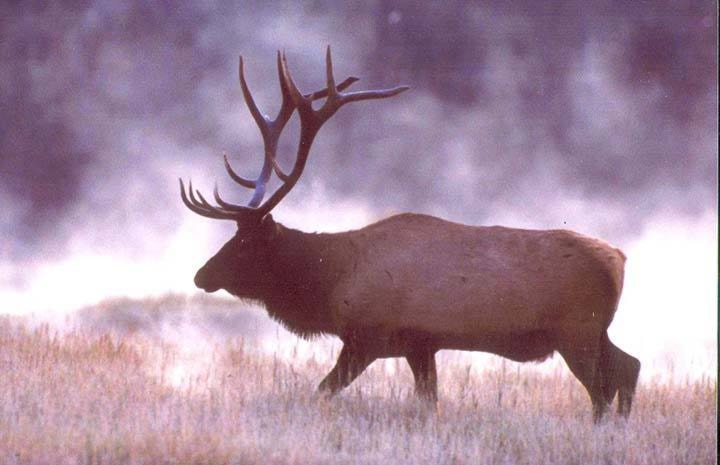Greg Amos/Columbia Valley Pioneer
With just under a week remaining in the bull elk hunting season in the East Kootenays, populations of the elegant ungulate appear to have reached the desired levels after five years of efforts — which has meant a limited season thus far for hunters.
"We closed the youth and senior season between Canal Flats and Invermere," said Tara Szkorupa, a wildlife biologist with the Ministry of Forests, Lands and Natural Resources in Cranbrook. "All the general open seasons for antler-less elk were closed this year, except for the early bow seasons," she added, in order to meet the Kootenay Elk Management Plan objectives.
That called for a 20 to 40 per cent reduction in South Trench elk populations, which have been reduced by 35 per cent over the last five years. That means a lower elk harvest is now needed to preserve the population at its current level.
"With the snow in the mountains, animals will start to move around now," said Ms. Szkorupa, who classifies elk as "probably the biggest draw" for hunters in the region.
"They're still rutting right now," she added. "The hunting season started off pretty slowly this year, but things are definitely picking up now with the cooler weather."
The open season on six-point and larger elk bulls is now underway in the region, and will last until October 20th. There's also limited entry hunting on elk cows and calves. (The open season normally includes five to 10 days in early to mid-September.)
A January 2013 population survey estimated there are 7,509 elk in the South Trench area, which runs from Canal Flats to the U.S. border. That number is down from a 2008 population of 11,580.
“We’re now within our objective for the population reduction, but we don’t want to keep going lower,” said Ms. Szkorupa. “We’ve really pulled back on the cow and calf hunting, which has the most impact on the population, compared to bull hunting.”
“Between Invermere and Canal Flats, we did a small survey around Finley Creek and Dutch Creek, and we had quite low calf ratios in that area,” she said, noting a winter ratio of 25 or more calves per 100 cows indicates indicates an elk population has the ability to increase.
“(The ratio) was in the teens, and that’s an indicator of a declining population.”
“There are a lot of other factors that we don’t control, like predation, road and rail mortality and unregulated hunting,” she added. “There are a few factors that may continue to influence the population.”
Elk hunting seasons were expanded in 2010 in part to help reduce crop damage in the South Trench area. Even though the elk population had dropped in the preceding years, crop damage persisted, leading the ministry to look at site-specific solutions for the hardest-hit agricultural areas.
“There’s a lot of different objectives with elk,” explained Ms. Szkorupa.
“A lot of them aren’t migratory anymore; they’re on the farmers’ fields year-round, which can cause higher levels of damage. That was one of the factors when we were trying to determine a target population size.”
“There’s also general grasslands health, and trying to ensure we don’t have too many elk really reducing the health of the grasslands through overgrazing, which will negatively impact elk over the long term,” she said.
Population counts take place in the winter, as elk normally ascend the slopes of the adjacent Purcell and Rocky Mountains in the summer.
“They’re pretty much all concentrated at that time; a few of the bulls are higher up, and we miss a few of them, but we’re capturing most of the population,” said Ms. Szkorupa.
